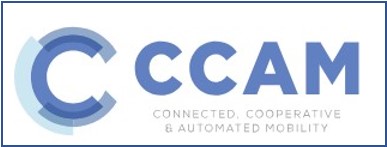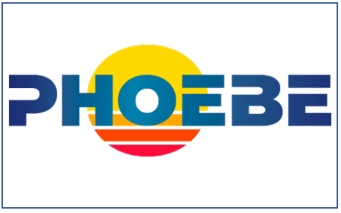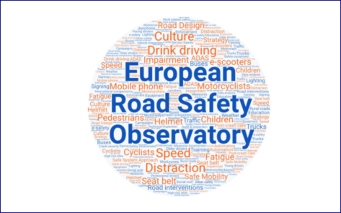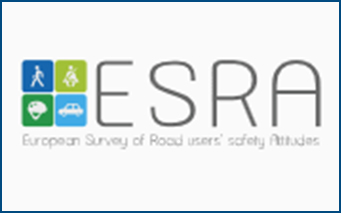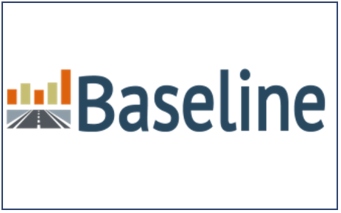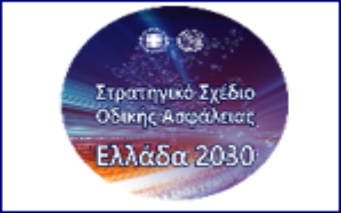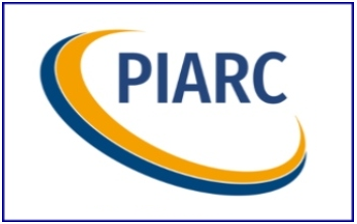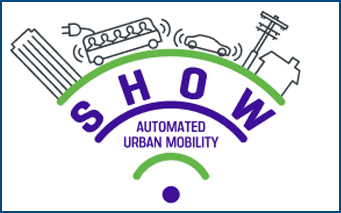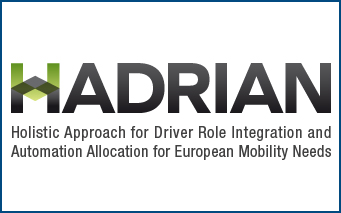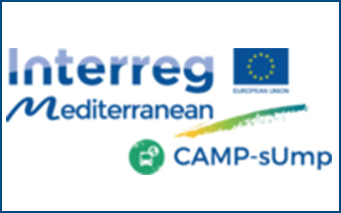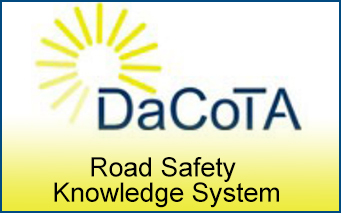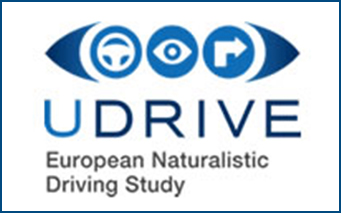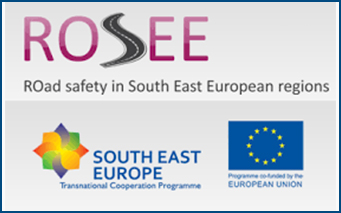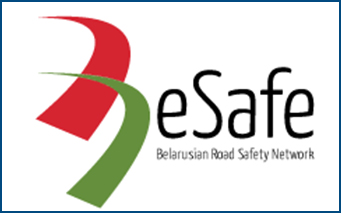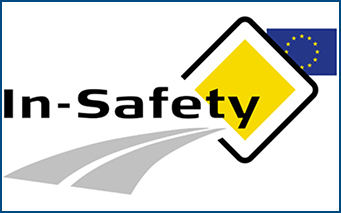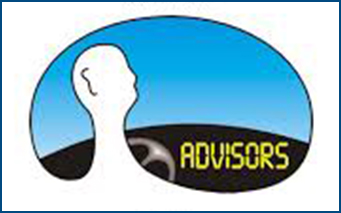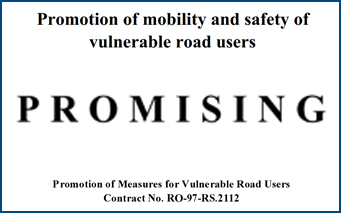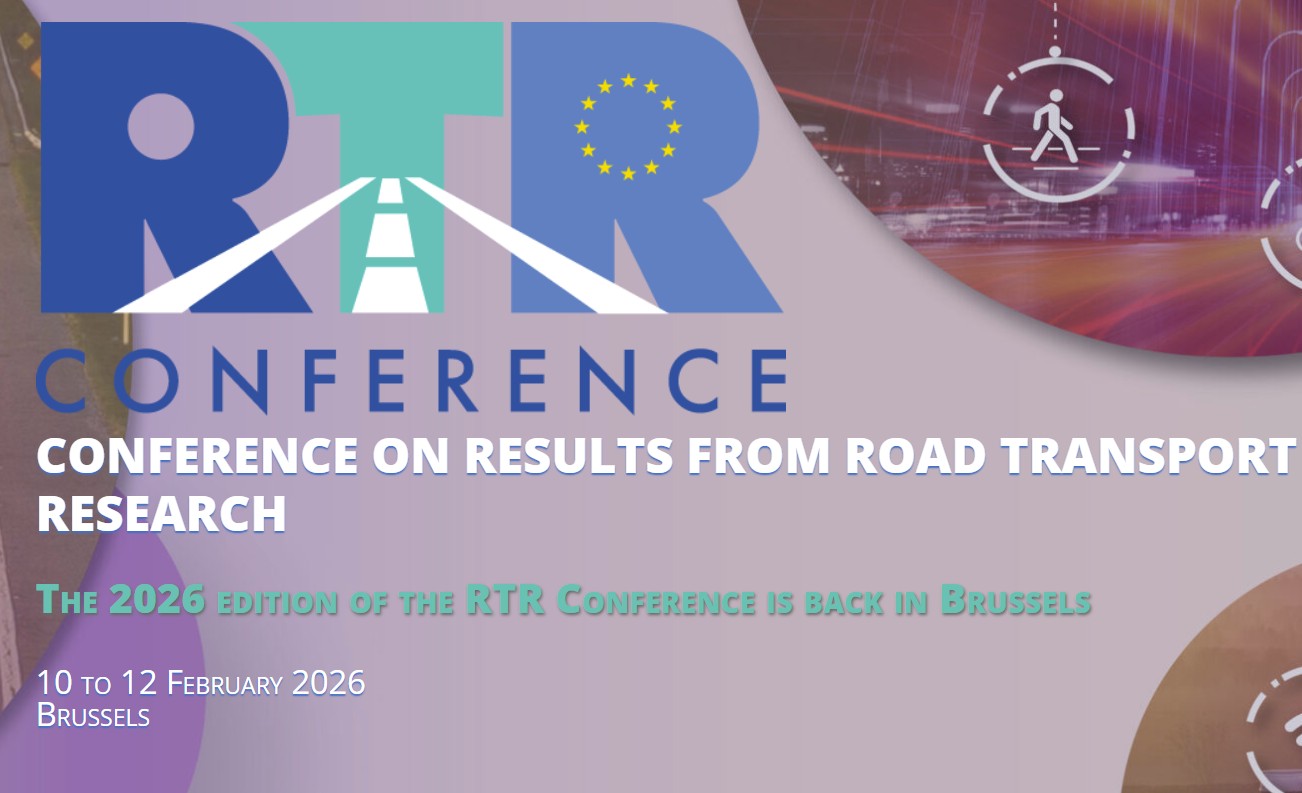Author: Ioannis Papadogiorgakis

NTUA organized with great success a Workshop on presenting the results of the NTUA Basic Research Programme , which took place in Athens on 30 September 2025. This Event aimed to strengthen and promote new research and make better use of existing research potential in areas of basic research at NTUA. The NTUA Department of Transportation Planning and Engineering contributed actively with the following presentation:
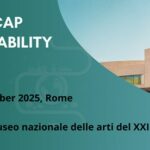
The European Association of Operators of Toll Road Infrastructures (ASECAP) in cooperation with AISCAT are organizing the 4th ASECAP Sustainability Forum which will be held in Rome, Italy on 15 December 2025. This year’s discussions will address key issues, including: sustainability reporting and climate risk management, building resilient and carbon-free road infrastructure and innovation and circular economy in the toll road sector. Participation is free upon registration. Programme can be found here. 

NTUA Professor George Yannis has given an invited lecture at the on “Artificial Intelligence in Road Safety and Mobility” on September 12th 2025. The Lecture focused on recent advancements and practical applications of artificial intelligence in enhancing road safety and mobility and also explored how AI-driven solutions can be tailored to meet diverse and evolving transportation needs. 


The 2025 International Research Council on the Biomechanics of Injury (IRCOBI) Europe Conference was held with great success in Vilnius, Lithuania, on 10-12 September 2025. The IRCOBI Conference focused on the avoidance and reduction of injuries related to road-traffic collisions, with particular emphasis on advanced safety technologies. The safety aspects of automated driving and the influence of vehicle and equipment design on injury outcomes were also discussed.  NTUA actively contributed with the following papers:
NTUA actively contributed with the following papers:
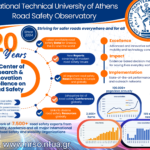
The NTUA Road Safety Observatory (www.nrso.ntua.gr) achieved its 20 years of continuous efforts towards scientific evidence in decision making for safer roads everywhere and for all. The nrso scientific team with high dedication, efficiency and expertise continues to grow and excel, with a rich and high quality scientific output of more than 1,000 road safety scientific Papers published (280+ in peer reviewed journals), hundreds of scientific Reports, 750+ presentations in scientific conferences, almost 200 Diploma Theses and 20 PhD dissertations. Over the past two decades, the NRSO portal has steadily expanded its contents, reach, visibility and impact, containing today more than 2.500 road safety items (25+ items per month), attracting over 100,000 pageviews annually, through its wide network of hundreds of Authorities, Research, Industry and Society partners worldwide and the 157 newsletters so far, reaching monthly more than 7.500 road safety experts worldwide. With great thanks to the NRSO dedicated scientists and all our great partners, the exciting journey towards scientific excellence continues … 
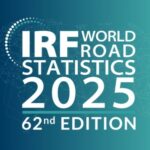
The International Road Federation (IRF) released the 62nd edition of the IRF World Road Statistics 2025 (WRS2025), with data open to all for free through the IRF WRS Data Warehouse platform, thanks to the generous support of the TotalEnergies Foundation and Michelin Corporate Foundation. The IRF WRS 2025 continues to be the major comprehensive, universal source of statistical data on road networks, traffic and inland transport, including traffic crashes. This year the WRS 2025 includes the latest data covering years 2018 to 2023, with the active contribution of NTUA for the Greek data. It includes over 200 road and transport-sector related indicators across 11 sections, covering more than 200 countries and territories. 

A paper titled Advancing traffic microsimulation: a systematic review of parameter selection for connected and autonomous vehicles authored by Maria G. Oikonomou, Apostolos Ziakopoulos and George Yannis has been published in Journal of Simulation. This paper presents a systematic review of 54 studies to consolidate key parameters for modelling Autonomous Vehicles and Connected and Autonomous Vehicles in traffic microscopic simulations. The integration of CAV is anticipated to transform transportation by enhancing traffic flow, safety and system efficiency. By comparing them to those used for human-driven vehicles, valuable insights are provided, including statistical summaries and boxplots, to inform the enhancement of simulation models. The findings provide a resource for researchers, supporting direct integration and refinement of AV/CAV parameters to improve the accuracy and reliability of future traffic simulations. 

ERTICO is organizing the 17th ITS European Congress which will be held, in Istanbul on 27-29 April 2026 under the theme “Bridging Innovation: Integrated, safe and seamless mobility”. Over the years, the European Congresses have offered a platform for thought leaders, developers, entrepreneurs and decision makers from the transport, logistics and IT industries to share ideas and progress smart and sustainable mobility. Researchers can submit their contributions until 24 November 2025. 


The Horizon Europe research project IMPROVA has recently released its 2nd Newsletter, focusing on enhancing road safety by addressing the complexities of long-term consequences (LTC) caused by road traffic crashes. This version of the newsletter celebrates the first year of the project highlighting it’s accomplishments. In its first year, IMPROVA has made significant strides in understanding and assessing the long-term consequences (LTC) of road traffic accidents. These actions align with our core research questions and lay the foundation for innovative tools, methodologies, and policy recommendations. 

The Transportation Research Board (TRB) is organizing the 105th Annual Meeting, which will be held in Washington DC, on 11-15 January 2026. The meeting program is expected to cover all transportation modes, addressing topics of interest to policy makers, administrators, practitioners, researchers, and representatives of government, industry, and academic institutions. More than 650 workshops and sessions are expected to take place, with over 4000 presentations. 

A NTUA Diploma Thesis titled “The impact of physical fitness on road safety and driver behaviour on rural roads” was recently presented by Marina Karachalia. For this reason an experimental procedure involving 46 participants aged 19–27 was conducted. The participants were evaluated in terms of their cardiorespiratory fitness through the Maximal Oxygen Uptake index (VO₂max), while also completing a related questionnaire. VO₂max was calculated based on heart rate (BPM – Beats Per Minute) after recovery from a short physical activity and then were categorized into two fitness groups: high fitness and low fitness, based on established VO₂max classification thresholds. The data was analyzed using linear and logistic regression models. Results suggest that high-fitness drivers have longer reaction times, greater variability in headway distance, higher average speeds, and, conversely, a lower probability of road accident involvement. Overall, higher physical fitness appears to be associated with more stable and controlled driving behavior, which, despite the increased reaction time, may contribute to reduced accident risk through improved decision-making. 


A NTUA Diploma Thesis titled “Investigation of Illegal Pedestrian Crossings in the Center of Athens” was recently presented by Marianthi Alverti. For this purpose a Stated Preference (SP) survey was structured in order to examine decision-making scenarios based on varying conditions of travel time, perceived crash risk, and personal comfort, with a dataset of of 212 responses. The analysis utilized binary logistic regression to examine the likelihood of illegal crossing, and generalized linear model to investigate the trade-offs pedestrians make between safety, time, and convenience given three different scenarios of camera use, traffic light with timer, and the baseline scenario to choose from. The models highlight the influence of time pressure, traffic conditions, and social components on individual decisions. The findings aim to showcase the importance of pedestrian decisions to prevent the likelihood of a road crash and, in this way, support more behavior-aware policy design, ultimately contributing to safer urban mobility systems. 


A NTUA Diploma Thesis titled “Investigation of Non-Compliant Pedestrian Crossings at Signalized Intersections Using Computer Vision Techniques” was recently presented by Mirogianni Melpomeni. For this reason an advanced video-based detection algorithm using data collected from a high-traffic intersection in Omonoia Square, in Athens was utilized. The dataset included detailed pedestrian and vehicle coordinates and speed characteristics, signal timing, and time-to-collision metric. The analysis consisted logistic regression, random forest classification, and point-biserial correlation to identify significant predictors of non-compliant behaviour and also to compare the effectiveness of the manual field and computer vision algorithm results. The findings contribute to the understanding of pedestrian violations and offer valuable insights for future implementation of automated monitoring systems and policy interventions for safer crosswalks. 


A NTUA Diploma Thesis titled “The impact of connected and autonomous vehicles on road safety with use of simulation” was recently presented by Aikaterini Kalliakoudi. For this purpose an analysis based on simulation data derived from nine scenarios implemented in the city center of Athens was conducted. Additionally, traffic and geometric characteristics of the locations where the conflicts occurred were documented. The statistical analysis was carried out through the development of three models: two multiple linear regression models and one multinomial logistic regression model. The results indicated that the influencing factors for the above variables are related both to traffic composition (e.g., vehicle types) and infrastructure characteristics (e.g., speed limit, capacity). Furthermore, the increase in AV/CAV penetration in the network was found to have a positive impact on road safety, significantly reducing the number of vehicle conflicts. 


A NTUA Diploma Thesis titled “Factors Influencing Speed Limit Violations on Athens Road Network” was recently presented by Daphne Kyprouli. For this reason data collected by OSeven Telematics and OpenStreetMaps, which includes information such as road geometry indicators, safety measurements and driving behavior metrics were utilized. The analysis consisted statistical models and machine learning algorithms aiming to predict speeding violations and understand the factors influencing them, with overall ten models created. The results demonstrated that speeding has a statistically significant correlation with various variables and improving driving behavior will consequently lead to a reduction of road crashes. The main factors affecting the likelihood of speeding in the examined road sections are the number of trips, the road section length and the percentage of mobile phone use, while slopes presented the least impact. 


A NTUA Diploma Thesis titled “Critical factors of self reported behaviour and safety of electric scooter users in Europe” was recently presented by Ibabi Hasim. For this reason statistical models were utilized in order to analyze the factors that lead electric scooter users to engage in dangerous driving behaviors, based on data from the third edition of the international ESRA survey (E-Survey on Road Users’ Attitudes). Findings highlight the importance of factors such as the acceptance of risky behaviors, the existence of legislation, the level of urbanization, and age. Furthermore, mandatory helmet use and stricter rules prove to be particularly effective in reducing violations. Finally, some proposals are provided that could improve the road safety of electric scooter users, such as strengthening the legal framework, stricter enforcement, and infrastructure improvement. 


The Horizon Europe research project CulturalRoad has recently released the CulturalRoad 2nd Newsletter, which provides information on the latest outcomes of the EU-funded CulturalRoad Project aiming to develop innovative methodologies to ensure the equitable deployment of Cooperative, Connected, and Automated Mobility (CCAM) services. This version of the Newsletter announced the release of the Project’s first animated video, a perfect way to learn more about the Project, by presenting its vision for more equitable, inclusive and connected mobility. It also emphasizes on the five key pillars of mobility equity and the Five-Pointed Rating Star System, designed to evaluate the level of equity of CCAM systems within their specific environments. 

The Ministry of Transport, Communications and Works of Cyprus organized a Meeting on the implementation of 20/30 km/h speed limit zones in urban areas which took place online, on 25 July 2025. This Event brought together representatives from the Ministry of Transport, Communications and Works and Municipalities of Cyprus to discuss relevant policy recommendations, supporting Cyprus initiative to adopt 20/30 km/h speed limits nationwide. NTUA actively contributed with the following presentation:

Dimitris Nikolaou, Eva Michelaraki, Armira Kontaxi, Julia Roussou, Maria G. Oikonomou, Marios Sekadakis and Stella Roussou, Research Associates of the Department of Transportation Planning and Engineering of NTUA were awarded with the NTUA Thomaidion Award for outstanding road safety publications in scientific journals. The Awards for publications in Scientific Journals concerned:
- Nikolaou D., Ziakopoulos A. & Yannis G. (2023) A Review of Surrogate Safety Measures Uses in Historical Crash Investigations, Sustainability, 15(9).

- Michelaraki E., Katrakazas C., Kaiser S., Brijs T. & Yannis G. (2023) Real-time monitoring of driver distraction: state-of-the-art and future insights, Accident Analysis and Prevention, Volume 193.

- Kontaxi A., Tzoutzoulis D., Ziakopoulos A. & Yannis G. (2023) Exploring speeding behavior using naturalistic car driving data from smartphones, Journal of Traffic and Transportation Engineering,10(6).

- Nikolaou D., Ziakopoulos A., Dragomanovits A., Roussou J. & Yannis G. (2023) Comparing Machine Learning Techniques for Predictions of Motorway Segment Crash Risk Level, Safety, Volume 9(2), Issue 32.

- Oikonomou G. M., Ziakopoulos A., Chaudhry A., Thomas P. & Yannis G. (2023) From conflicts to crashes: Simulating macroscopic connected and automated driving vehicle safety, Accident Analysis & Prevention, Volume 187.

- Sekadakis M., Katrakazas C., Michelaraki E., Ziakopoulos A. & Yannis G. (2023) COVID-19 and driving behavior: Which were the most crucial influencing factors, Data Science for Transportation, 16(5).

- Roussou S., Garefalakis T., Michelaraki E., Katrakazas C., Adnan M., Khattak M., Brijs T. & Yannis G. (2023) Examination of the Effect of Task Complexity and Coping Capacity on Driving Risk: A Cross-Country and Transportation Mode Comparative Study, Sensors 2023, 23(24).

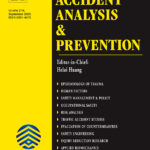
A paper titled Safety contributing factors analysis of older vulnerable road users: General and local perspectives authored by Xueyu Zhang, Xueson Wang, Mohamed Abdel-Aty, George Yannis and Guangzhu Luo has been published in Accident Analysis & Prevention. This paper utilizes an analytic approach to explore the effects of contributing factors for older vulnerable road users’ (VRUs) crashes, with particular attention to the integration of general and local analysis. Socio-economic, road network, public facility, traffic enforcement and older VRU crashes were collected in the grids and gradient tree-boosted Tweedie compound Poisson models as well as geographically weighted random forests were employed. The findings suggest that population and healthcare played an important role in predicting older VRU crashes. The concentration areas for older people, including healthcare facilities, markets, and bus stops, could be targeted to make safety improvements. Furthermore the proposed approach emphasizes that the countermeasures for improvement should be formulated based on the spatial distribution of the variable importance, that is, “adapt to local conditions”. 

NTUA has recently released the 2025 version of Key Road Safety Performance Indicators in Greece in the framework of the EU project Trendline. These KPIs are derived from nationwide field observations in 2025 on four key Road Safety Performance Indicators (KPIs): speed, seatbelt use, helmet use, and driver distraction. Key findings show that only 71% of vehicles on rural roads complied with speed limits (less than in 2022), seatbelt use among rear passengers remained as low as 57%, helmet use increased for both front (85%) and rear riders (60%) and mobile phone use increased on rural roads (12%). These results provide valuable evidence for targeted road safety interventions and the future alignment of Greece with national and EU safety targets. 

The University of Thessaly, Department of Civil Engineering, Traffic, Transportation and Logistics Laboratory (TTLog) in cooperation with the University of Kentucky and the University of Alabama at Birmingham are organizing the 8th Conference on Sustainable Mobility which will take place in Skyros, Greece on 1-3 July 2026. The theme of this year’s Conference is: “Green and Digital Transition”, aiming to explore how digital technologies, such as AI, big data, automation, and connectivity, can work hand-in-hand with green policies, renewable energy, and low-emission solutions to transform mobility. Researchers can submit their abstracts until 1 October 2025. 

A paper titled Trajectory-based indicators to determine the local character of intersection conflicts: A micro-spatial analysis authored by Andreas Hula, Apostolos Ziakopoulos, Angel Losada, Andrea Schaub, Peter Saleh and George Yannis has been published in Accident Analysis & Prevention. This paper utilizes the Mobility Observation Box (MOB), which provides a flexible data collection to be used in subsequent video analysis. To facilitate potential MOB uses, this study leverages over 51 h of naturalistic video data at a busy Vienna intersection to advance road safety research, by employing random parameters binary modelling of the likelihood of critical conflict occurrence and Gaussian generalized additive spatial modelling to identify key factors influencing the absolute values of conflict angles on critical conflicts only. The findings suggest that all road user types were ultimately less likely to be involved in safety–critical conflicts compared to cars in both leading and following roles, with the exception of cyclists in the leading role. Within the micro-spatial analysis, the kinematic parameters of the second road user only (speed, max acceleration and max deceleration), the duration of the interaction as well as intersection-specific local effects related to the position of the leading road user were all found to influence the transformed absolute value of the angles of critical conflicts. 

Simone Paradiso, NTUA PhD Candidate & Researcher, received the Best Poster Award during the Porsche Symposium for Scientific and Practical Progress in AI, which was held in Stuttgart, on 26 June 2025 as part of the GSERM St. Gallen Summer School 2025. The Symposium included keynote speeches, discussions and a poster session focusing on Generative AI with LLMs. The award for the best poster concerned:

OASA together with NTUA organized with great success the OASA Electrification Workshop which was held on 4 July 2025, in Athens, as part of the Horizon Europe project metaCCAZE. The event marked a significant step forward in co-designing the future of clean, efficient, and citizen-centered public transport in the Greek capital. Particular attention was given to the safety aspects of electric buses. Participants included representatives from OASA, OSY, NTUA, DEDDIE, the Greek Ministry of Transport and other local and national actors involved in sustainable mobility.  NTUA actively contributed with the following presentation:
NTUA actively contributed with the following presentation:

The International Traffic Safety Data and Analysis Group (IRTAD) of the International Transport Forum (ITF/OECD) and the Department of Transportation Planning and Engineering of NTUA are co-organizing the 8th IRTAD International Conference: Better Road Safety Data for Better Safety Performance which will be held in Athens, Greece, on 15-17 April 2026, with the support of FERSI, ECTRI and HITE. The objectives of the Conference are to discuss improvements in the quality of data systems and data analysis globally, by fostering knowledge transfer among participants, with particular emphasis on road safety performance. The Conference is open to all and is primarily for the attention of road safety researchers, data analysts, those involved in collecting safety data and developing databases, and all those using the results of research to advise decision makers on road safety matters. 

A new book titled The Routledge Handbook of Sustainable Urban Transport edited by Lucy Budd, Stephen Ison and Maria Attard has been recently published. This Handbook offers a comprehensive exploration of urban transport sectors, as well as the challenges, impacts and issues being faced. Furthermore, this Monograph exploits technical, social and economic solutions for sustainable urban transport. NTUA actively contributed with the following chapter, co-authored by George Yannis and Eleonora Papadimitriou:
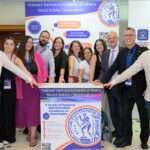
The Institute of Communications & Computer Systems (ICCS) together with International Road Federation (IRF) and several other Organizations, organized with great success the International Symposium Navigating the Future of Traffic Management in Athens, Greece on 29 June – 3 July 2025. This Conference focused on four thematic tracks: digitalization in traffic management, sustainable mobility strategies, integrated infrastructure systems, and road safety innovations. These tracks aimed to address the complex challenges of modern traffic management and offer actionable insights for a safer and more efficient transportation future. 
 NTUA actively contributed with the following papers, posters and presentations:
NTUA actively contributed with the following papers, posters and presentations:

 Predicting Pedestrian Violations Using Object Detection and Deep Learning: A Comparative Study of LSTM & GRU Models
Predicting Pedestrian Violations Using Object Detection and Deep Learning: A Comparative Study of LSTM & GRU Models
 A Geo-Spatial Analysis of Unsafe Traffic Events and Crash Occurrence at Urban Intersections: Insights from Telematics Data and Machine Learning
A Geo-Spatial Analysis of Unsafe Traffic Events and Crash Occurrence at Urban Intersections: Insights from Telematics Data and Machine Learning
 Hybrid Modelling for Risky Driving Behavior Classification: Insights from Naturalistic Driving Study
Hybrid Modelling for Risky Driving Behavior Classification: Insights from Naturalistic Driving Study
 Preferences of Public Transport Passengers Towards Contactless Bank Card Payments
Preferences of Public Transport Passengers Towards Contactless Bank Card Payments
 Combining diverse data sources for intersection crash analyses based on incomplete records
Combining diverse data sources for intersection crash analyses based on incomplete records
 Training a YOLO-based model for speed limit sign recognition
Training a YOLO-based model for speed limit sign recognition Road Safety Knowledge Exchange in Low and Middle Income Countries
Road Safety Knowledge Exchange in Low and Middle Income Countries

The Secretariat of the African Road Safety Observatory is organizing a Webinar on road safety performance indicators which will take place online, on 14 July 2025. The webinar aims to enhance mutual learning, encourage regional alignment, and stimulate future capacity-building activities related to SPI development and use. This event will bring together national road safety coordinators, members of regional observatories, policymakers, and technical experts to explore the added value of SPIs, the use of appropriate methodologies, and good practices from Africa and other world regions.  Participation is free upon registration. Programme can be found here.
Participation is free upon registration. Programme can be found here.

BMW in cooperation with Chip Design Germany organized with great success the 2025 BMW Summer School which took place in Saint-Raphaël, France on 29 June – 4 July 2025. This year’s event focused on the topic of trust and safety in artificial intelligence, a broad field of discussion and growing relevance at the crossroads of technology, psychology, product safety, law, economics, and ethics.  NTUA actively contributed with the following presentation:
NTUA actively contributed with the following presentation:
























